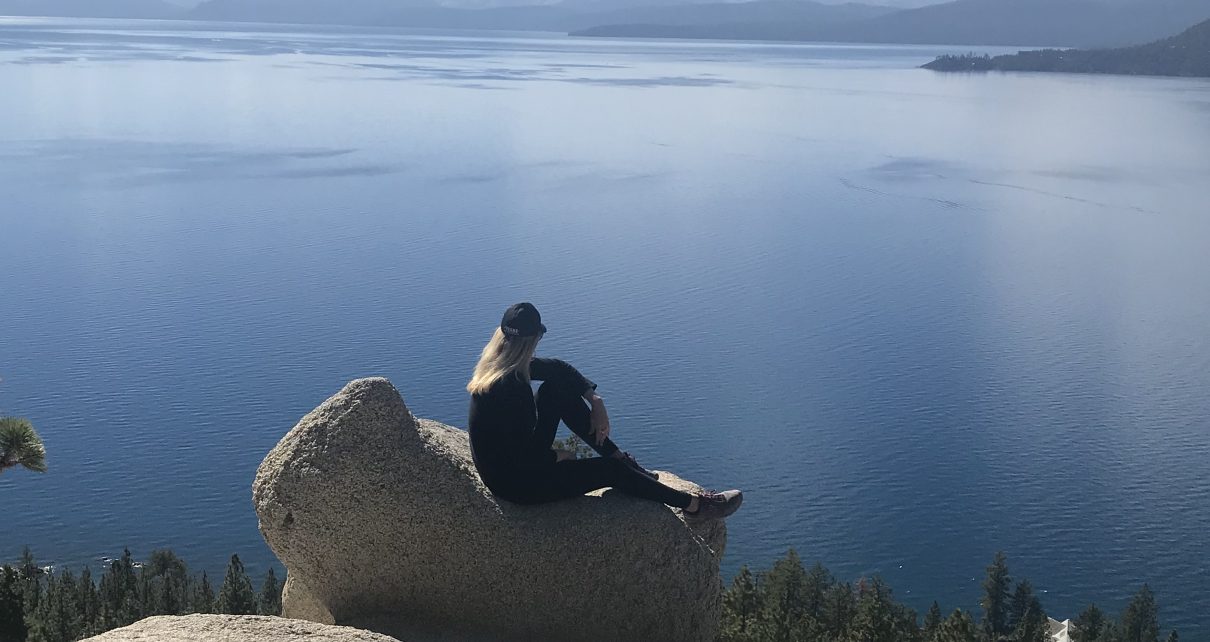
Off Tunnel Creek Trail. View of Lake Tahoe from Monkey Rock. (Photo: The Nevada Globe Editor for The Nevada Globe)
Commissioner Alexis Hill Proposes User Tax on Tahoe Basin Drivers
Hill: ‘We need folks to visit here, but we need a system to manage them’
By Megan Barth, July 25, 2023 1:48 pm
What happens when federal and local government agencies build a billion dollar, concrete tourist attraction in North Lake Tahoe, without adequate parking, and that hugs a narrow, two-lane highway?
If you guessed traffic congestion, you must have been graced with a little common sense–or, you’re unfortunate enough to have been ensnared in the mile-long back up on SR-28 while trying to get home or visiting the billion dollar bike/walk path.
Having lived on the North Shore of Lake Tahoe for nearly a decade, I watched (in horror) for years as the excavation of the billion dollar path was carved into the side of the East Shore of Lake Tahoe. What used to be a relatively easy in-and-out of the basin, or an enjoyable hike up Tunnel Creek, has devolved into a California-esque Sigalert of epic and dangerous proportions. Fire evacuation plans? Anyone?
The beautiful vista from Monkey Rock is now scarred with bright red bus lanes and out-of-state cars parked on residential sidewalks of Lakeshore Blvd. Hidden and secluded beaches, predominately used and cared for by locals, are now littered with trash from weekend warriors.
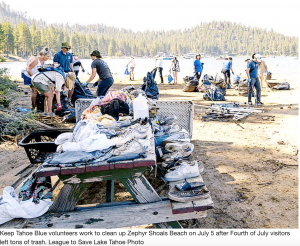
Additionally, when everyone was told to stay home to protect grandma from catching a virus, not many people stayed home. In fact, many came to Lake Tahoe to escape or snap up some property for their primary or secondary residence, which drove up rental and housing prices to astronomical and unaffordable levels for our local workforce.
This influx of new residents and tourists have created so much traffic that Fodor’s recently listed Lake Tahoe as a “No Go Zone” due to congestion and ecological concerns. Fodor’s ironically noted that, “tourism is a significant contributor to climate change.”
Yet, tourism is also a significant contributor to revenue–an estimated $5 billion in revenue for the CalNeva basin.
Fodor’s also categorized Tahoe as “natural attractions that could use a break” and proclaimed that “Lake Tahoe has a people problem.”
What is the solution to this congestion?
According to the people behind the “people problem,” their solution is to tax the people who live, work, and visit the basin and force people into electric buses, bikes, or scooters. The code name for this forceful and pricey nudge is referred to as “micro mobility.”
Late last week, County Commission Chair Alexis Hill (she/her/hers) took to Twitter to announce “user or roadway pricing to limit the vehicles in the basin and incentivize the use of public transit.”
Congestion has reached such a critical point that it’s time to adopt “user or roadway pricing to limit the vehicles in the basin and incentivize the use of public transit,” said Washoe County Commission Chairwoman Alexis Hillhttps://t.co/yD0khJ1Ryz
— Commissioner Alexis Hill (@VoteAlexisHill) July 22, 2023
In a report by the Reno Gazette Journal, Hill recognizes that the road to sustainability is marred with the consequences of the decisions of the numerous elected and unelected officials who preside over this once-pristine (and once-manageable) section of Lake Tahoe:
Congestion has reached such a critical point that it’s time to adopt “user or roadway pricing to limit the vehicles in the basin and incentivize the use of public transit,” said Washoe County Commission Chairwoman Alexis Hill in Reno, Nevada, the closest major city, about 20 miles northeast of the lake.
One of an increasing number of people to take that view, Hill knows the idea that would have been dismissed out of hand a decade ago by hotels, casinos, ski resorts and other business concerns opposed to anything that might discourage visitors.
…She acknowledged it won’t be easy, especially because of the multiple jurisdictions involved, including five counties in two states, individual towns, regulators, the Coast Guard and the U.S. Forest Service.
“But honestly, I think people may have recognized we may already be getting to the point of unsustainability,” Hill said.
“When you have folks like Fodor’s say, Don’t go to Lake Tahoe,′ that’s not good for us as a region. We need folks to visit here, but we need a system to manage them,” she said.
People being managed by a system doesn’t sound so nice…or sustainable.
One may suggest, and plenty of residents have at monthly and quarterly community meetings— led by consultants and bureaucrats— that a tourist attraction will, in fact, invite traffic, especially to a remote and mountainous destination.
Prior to the billion dollar path, there were plenty of tourists who sustained our local economy without being “managed by a system.”
If tourists fly into Reno, they will likely rent a car for the duration of their stay.
If tourists are visiting from neighboring California, they will take an easy 90-minute drive to the basin which can result in traffic jams that stretch to Sacramento.
Furthermore, the increasingly unpopular “mobility hubs” are in locations in the basin that tourists have to drive to to catch an ecologically-friendly bus.
Lastly, the workforce in the basin is made up of laborers who tend to the uber-wealthy along the lake and the small businesses who make the community stronger and rely on tourism dollars.
The working class can’t use electric bikes, scooters, or buses to carry their equipment or supplies to their job sites.
They rely on their affordable and efficient gas guzzling trucks or cars to haul their equipment, and soon it looks like they will be charged a fee for commuting to, or living in, the basin.
The Globe spoke to a seasoned tourism official who reiterated the concerns held by a variety of local workers and residents of the basin:
“I don’t understand their twisted sustainability logic related to micro-mobility or bussing people around the lake. The Casinos in the basin rely on cars for their business. The newly designed and approved convention center in South Lake Tahoe will rely on cars for their business. This whole idea to eliminate cars from the basin doesn’t make sense. The area is in a location that Californians and tourists can easily drive to and want to drive to in order to tour the area. They aren’t going to be forced into public transit, especially when there is no infrastructure in place to support it.”
The latest fees published by the Tahoe Transportation authority can be found here.
As these prices were published in 2019, they are now outdated due to rising energy costs, transportation costs, and inflation.
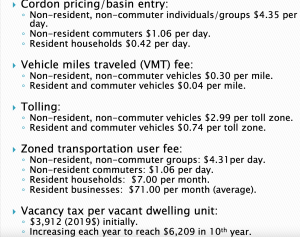
We have reached out to both Commissioner Hill and Andy Chapman, CEO of Travel North Tahoe Nevada, in order to receive clarification on current travel pricing/fees that are being considered by the numerous boards, agencies and government entities involved in “sustainability planning” for the basin.
We will update the story with their comments if and when received.
Editors note: Dogs cannot walk on the billion dollar bike path in the summer due to the temperature of the materials used in parts of the trail. Dog booties or wagons are strongly recommended.
- Illegal Alien Identified As Wrong-Way Driver in Fatal Crash That Killed LVMPD Officer - December 23, 2024
- Senator Rosen Joins Letter Raising Concerns About Pete Hegseth’s Nomination - December 20, 2024
- NV SOS Launches Four Investigations Into 2024 Election Violations - December 20, 2024
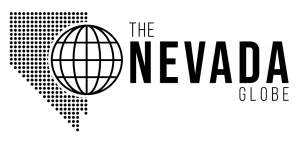

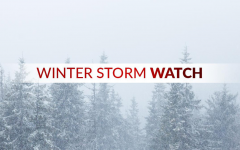
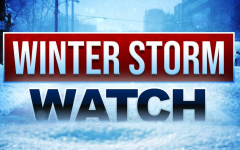

Another very insightful story Megan. Commissioner Hill is way off base. A fee will not drive people to mass transit, as the transit infrastructure is limited and also has limited hours. This is just another politician trying to tax people. For the locals to be caught up in this would be beyond unsatisfactory and ensure her and others for this being voted out.
So the first thing this Alexis Hill thinks of is taxing people and how to control them. liberal logic 101.
Nevada Law forbids such a tax. NRS 277.200 Article IX Transportation District
(9) By resolution, determine and propose for adoption a tax for the purpose of obtaining services of the district. The tax proposed must be general and of uniform operation throughout the region, and may not be graduated in any way, except for a sales and use tax. If a sales and use tax is approved by the voters as provided in this paragraph, it may be administered by the states of California and Nevada respectively in accordance with the laws that apply within their respective jurisdictions and must not exceed a rate of 1 percent of the gross receipts from the sale of tangible personal property sold in the district. The district is prohibited from imposing any other tax measured by gross or net receipts on business, an ad valorem tax, a tax or charge that is assessed against people or vehicles as they enter or leave the region, and any tax, direct or indirect, on gaming tables and devices. Any such proposition must be submitted to the voters of the district and shall become effective upon approval of the voters voting on the proposition who reside in the State of California in accordance with the laws that apply within that state and approval of the voters voting on the proposition who reside in the State of Nevada in accordance with the laws that apply within that state. The revenues from any such tax must be used for the service for which it was imposed, and for no other purpose.
Sierras? nope. Sierra.
these types of programs are part of the totalitarian cabal. They want government to control transportation, education, medical, housing, EVERYTHING. Good bye free society.
Good responses but one question: If we have too much traffic and tourism–I totally
agree–what’s your idea to reduce the problem? Ron Grassi
Unfortunately the transit system is not effective enough to get people out of their cars.
The committees and agencies promote even more tourism a 5 billion year industry. TRPA including Alexis Hill vote for luxury discretionary projects catering to the wealthy including mcmansions that create a demand for even more workforce and traffic.
There are inequitable affordable/workforce housing policies between the states.
The only protection for the locals are grass roots organizations as tourism and short term rentals are big business ..
I advocate a basin reservation system as a great start.
megan wrote an insightful article. thank you
The author refers to a “billion dollar” path no less than five times in this article. Multiple sources (RGJ, Tahoe Fund, LVRJ, KOLO, Engineering News Record) state the cost of the path was approximately $41 million. What other “alternative facts” is the author using?
Hi! Author here. If you click on the “costs” link in relation to transit fees, you will find the entire scope and costs of the project which shows that $1.5 billion was used for the construction of the project and an additional $2 billion is needed to expand the billion dollar bike path.
What I failed to mention in the article is that we already had a bike path and walking path. It’s called the natural terrain surrounding the lake.
You’re welcome.
I have a suggestion, how about not spending tax dollars to advertise Nevada State Parks, mainly, Sand Harbor. I still see ads to publicize the Nevada side of the lake and the many attractions. How many tax dollars from transient occupancy and hotel taxes were used to build the new venue in Stateline? How many more people will that bring in by car?